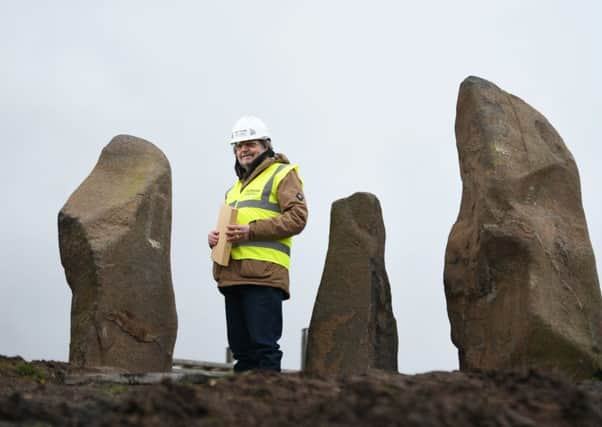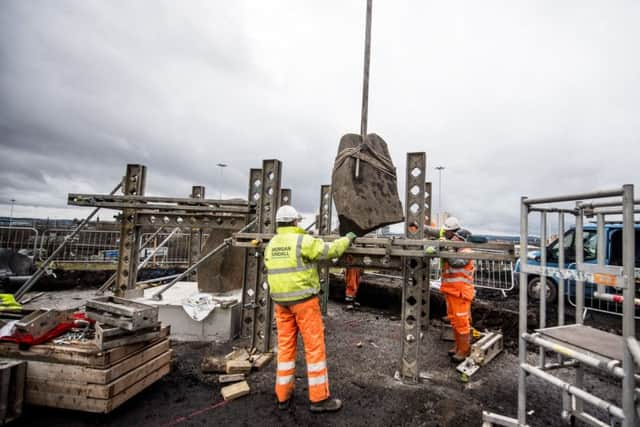Stone circle moves to new home overlooking £250m Glasgow regeneration scheme


The ring of stones, which stood on a hill in the city’s Sighthill area, was earmarked for demolition as part of the £250 million redevelopment scheme, but proved so popular with the public it has been saved and translocated.
Commanding a panoramic view over Glasgow city centre, the 17 stones will stand at the spot originally picked in the 1970s but ruled out due to tower blocks obscuring the horizon sight lines.
Advertisement
Hide AdAdvertisement
Hide AdAs well as the giant whinstone slabs, selected from a quarry in Kilsyth, topsoil from the old site is also being moved to preserve funeral ashes scattered at the landmark.


The circle – the first astronomically alligned version to be built in the UK for around 3,000 years – was the brainchild of Troon-based science writer Duncan Lunan, who has been back on site overseeing the latest works.
Drawing inspiration from prehistoric monuments at Callanish in Lewis, the Ring of Brodgar in Orkney and Wiltshire’s world-famous Stonehenge, he designed the circle as an astronomical observatory with the standing stones aligned with the sun and moon and so able to mark the passing seasons.
As part of the shift, Mr Lunan has had to recalculate the positioning of the stones to suit their new home.
But he believes the recreated circle will be even more imposing than its first incarnation and closer to his vision for the megalithic site as the 6ft-tall stones will be set higher out of the ground.


He said: “In the original site some of the stones were half buried due to the slope they stood on but now they will be erected at their true height.
“We’ve had to make a couple of changes and recalculate the alignments for each stone to take account of the new location but I’m very happy with it so far.
“The new site means the stones will be more visible than before and can be seen from the road.
Advertisement
Hide AdAdvertisement
Hide Ad“I think they were a slightly under-appreciated asset for the community but now they stand as a symbol of the area’s regeneration.”
Most of the stones are already in place, with the rest due to be erected in the next few days.
The final stone will hoisted into place in time for the spring equinox, on 20 March – exactly 40 years from the day it was first completed in 1979.
Councillor Susan Aitken, leader of Glasgow City Council, said: “The re-emergence of the Sighthill Circle is a fitting symbol for the regeneration of the area, an area which in the near future will welcome a new community, schools campus, parkland and connections to the city centre and nearby communities.
“The support for the retention of the stones was compelling and I’m delighted they will now become a central feature of a reborn Sighthill, linking to the area’s past and acting as a gateway to a new neighbourhood that was for too long disconnected from the rest of the city.”
The job of erecting the circle was carried out under a government job-creation scheme.
As project manager, Mr Lunan suggested it should serve as a tribute to Scots archaeoastronomists Prof Alexander Thom and his son Dr Archie Thom, Prof Archie Roy and Dr Euan Mackie.